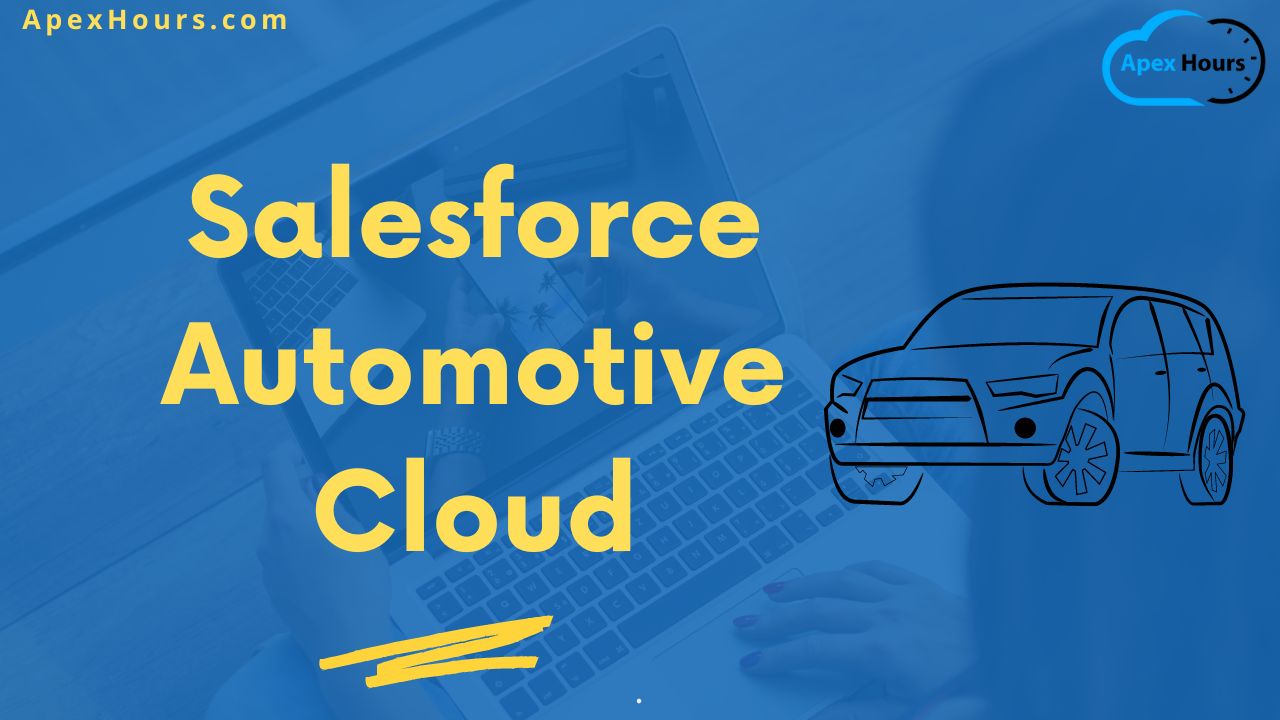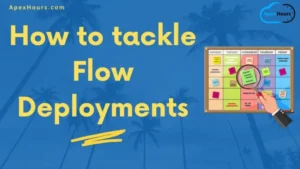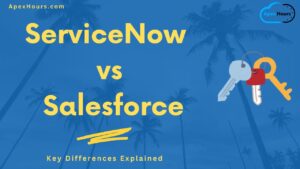In this article, I will lay out my thoughts about the Salesforce Automotive Cloud through the prism of a Salesforce Consultant working with car dealerships daily. Maybe this will be the starting point or next step in your career.
Alternatively, it is beneficial to investigate industry-specific clouds if you are starting to explore different Salesforce environments. This can be advantageous because even if you don’t have extensive knowledge of Salesforce yet. You could use your familiarity with the sector and apply that understanding when implementing the product. Or you may want to read this article later about how to start your Salesforce Career. Anyway, an industry-specific cloud is a great starting point.
What is Salesforce Automotive Cloud?
Last September, Salesforce announced the launch of Automotive Cloud. At first glance, it looks like a powerful all-in-one tool for businesses in the automotive industry. But is it that good for car dealerships? As a former auto dealership employee and four years of experience in building Salesforce Dealership Management Systems at Blondie. I decided to take a closer look and see if this platform is truly suitable for dealerships.
What is Dealership Management System (DMS)?
A Dealership Management System (DMS) is an integrated software suite to manage a car dealership’s daily operations. It includes modules for sales, service, inventory management, vehicle lifecycle management, customer relationship management (CRM), and more.
It acts as a corporate Operating System for auto dealerships where companies store and process their customer data and in return, get meaningful insights.
What Does That Mean For a Salesforce Consultant?
It is undeniable that Salesforce consultants with specialized niche knowledge have an easier time getting jobs and commanding higher hourly rates than their non-specialized peers. This is because the demand for expertise in particular areas of the Salesforce platform is always high, and businesses are willing to pay top dollar for quality resources.
Having a secure job is a top priority nowadays, especially when economic downturns are inevitable. As a Salesforce consultant, one of the best ways to ensure job security is to develop expertise in niche areas of the Salesforce platform, such as Automotive Cloud. With more and more car dealerships embracing this new technology. There are numerous opportunities for experienced consultants to leverage their specialized knowledge and take advantage of the high demand for a DMS solution.
First Impression of Automotive Cloud
The Automotive Cloud offers tools designed to manage all aspects of dealership operations, from sales and service to inventory management and customer relationship management. That’s a promising start, but let’s take a closer look.
My first impression of Salesforce Automotive Cloud was one of disappointment. At first glance, many objects and features may seem overwhelming, and it is unclear how they all come together to create an effective platform.
Take Vehicle Definitions, for example. An object aggregates information about a specific vehicle model and extra assets like engine, transmission, navigation, etc. But what if I want to configure the vehicle? Well, bad news – Automotive Cloud does not offer CPQ (Configure Price Quote), which in my opinion, is a shame. My colleague wrote a good explanatory article about what is Salesforce CPQ a while back; take a look if you’re still unfamiliar with the topic.
But on the other hand, I’ve discovered very comprehensive vehicle lifecycle management features. In Automotive Cloud, Salesforce calls parts of the vehicle (or vehicles as such) an asset. Every asset can have an asset, which can have its purchase, maintenance, and decommissioning cycle. This is a great feature since car dealers profit most after selling a vehicle by providing warranty maintenance services.
As you see, I had mixed feelings in the beginning.
What Salesforce Products Does It Use
After being disappointed, I decided to take a step back and look at what Salesforce is putting inside the Automotive Cloud package. It appears that it is a mix of:
- Sales & Service Cloud
- Manufacturing Cloud
- Consumer Goods Cloud
- Retail Solution
- Salesforce Platform
And of course, customizations made specifically for Automotive Cloud. If you want to learn more about Automotive Cloud, I would recommend reading Automotive Cloud documentation, since it contains very nice explanations of the use cases it was designed for. I will talk about this later, but this article is not intended for an in-depth technical review, so I will keep expressing my own opinion if you agree.
Automotive Cloud Data Model
When I start with any new product, I love taking a look at the data model. It explains the dimensions of how developers were looking at the product and it makes it easier to understand what was the thought underneath the design.
You can take a glance on the Automotive Cloud Data Model yourself in the Salesforce Documentation, meanwhile, I’ll comment on what I have, and importantly, what a haven’t discovered in it.
While looking at the Automotive Cloud, I’ve noticed Salesforce focused it’s efforts around the following dimensions:
- Client dimension. This dimension is represented by a household array of objects, linked to accounts. At the same time, personal accounts are disabled by default. Household dimension is used a lot in multiple clouds, yet it is interesting to see it in Automotive Cloud.
- Vehicle dimension. Very important dimension to track vehicle lifecycle lifecycle. I had a sort of love-hate impression on this dimension. It heavily reuses service cloud Asset objects. On one hand it gives you the flexibility to configure any sort of vehicle with multiple asset (engine, paint, transmission etc), but on the other hand I haven’t found any built-in flows/apex classes to link this dimension to the sales process. To configure a vehicle, you’ll have to build a lot of functionality on top of this object domain. Secondly, It’ll be a pain for business to define what to include as an asset (should paint be an asset or integral part of vehicle definition?)
- Distribution domain. Clearly, Salesforce is focusing their efforts not on dealerships, but rather on distributors or OEM manufacturers. It has plenty of objects to route potential customers to specific dealers. I suppose this is where the whole plot of Automotive Cloud is hidden. In this array of domains.
Again, I’ve group large number of objects into dimensions, which I understood after studying data model. For example, there is so-called Rebate domain, which as I understand that, is designed around Vehicle and Distrubution, to keep track discounts, commission payouts or warranty repairs.
A Quick Overview of Capabilities
Just as a reminder, I verified Automotive Cloud against my knowledge of dealership busines and took a broad look of feature, automotive cloud has to offer. So let’s take a closer look at some of the capabilities most important to car dealers.
Vehicle Lifecycle Management
This is probably one of the most important requirements for any dealership management system, as it tracks and manages data related to every step in the life cycle of a car, truck, or motorcycle from production to sale. Automotive Cloud does provide a very comprehensive Lifecycle Management. I loved how milestones are organized in Automotive Cloud, especially since milestone doesn’t have to be deterministic (does not have to follow strict order). In auto sales, it often happens, that car is sold even before it is produced, so thumbs up for realizing this feature. Though, it will require some dancing with configuration to get them to work properly.
Quotes
If you are already familiar with the Salesforce Quoting functionality, you will find this functionality very easy to understand. The bad news is, however, that they do not offer CPQ, as I mentioned before. CPQ is very important for some dealerships as it offers vehicle configuration within the Salesforce interface and stores all configuration data, which later would help them better understand customers and provide better after-sales customer experience.
Inventory Management
Lastly, I looked at inventory management within Automotive Cloud. This feature allows you to track millions of spare parts across multiple warehouses and locations without manually entering each item into the system individually, which is great for large dealerships with hundreds or even thousands of items in their inventory.
I did a small test by uploading a couple of millions of records (a normal spare part database for any dealership), but the problem was the data model of the Automotive Cloud. I had to significantly modify files to link spare parts to the right models and price book. Unfortunately, I did not find any built-in mass update features for this type of workflow.
So Is it Worth Learning Salesforce Automotive Cloud, and Will it Become a Thing for Car Dealers?
The answer is yes and no. I don’t see this system as a DMS for Salesforce. It contains tons of features, which will be unused by dealerships. It has excessive functionality for dealers while missing some vital parts. I would say it is a great fit for auto manufacturers or distributors since there is built-in functionality to manage other dealerships (manage dealers of your brand) an a lot of manufacturing-related stuff.
But is it worth learning it? I would say definitely yes. And this is why. Salesforce has only recently launched Automotive Cloud, and on the day of this article. There was no “Accredited Professional” badge available for Automotive Cloud.
If you’re still unfamiliar with Accreditation Badges, they are like certifications, but for industry-specific use cases. Look into this Accredited Professional article from Salesforce; it will give you a bit more context. If you start discovering the automotive cloud now, you will get ahead of your Salesforce Consultant peers and potentially gain more employers’ traction.
Last but not least, Automotive Cloud consists of multiple Salesforce Clouds, which is a great way of learning Salesforce and getting familiar with complex data models. The good news is that Automotive Cloud has a very limited number of Flows and code at the moment. This reduces the learning curve of this product and gives you a chance to build your flows, which could become a selling point for you as a Salesforce Professional.
I hope this article sheds some light on the new Salesforce product and will help you in your Salesforce Career. This article was brought to you in collaboration with Dealership Management System expert Lorine Kyler (me). Make sure to subscribe to this blog and let me know in the comments down below, what I have missed in this article so we can address all your questions.




